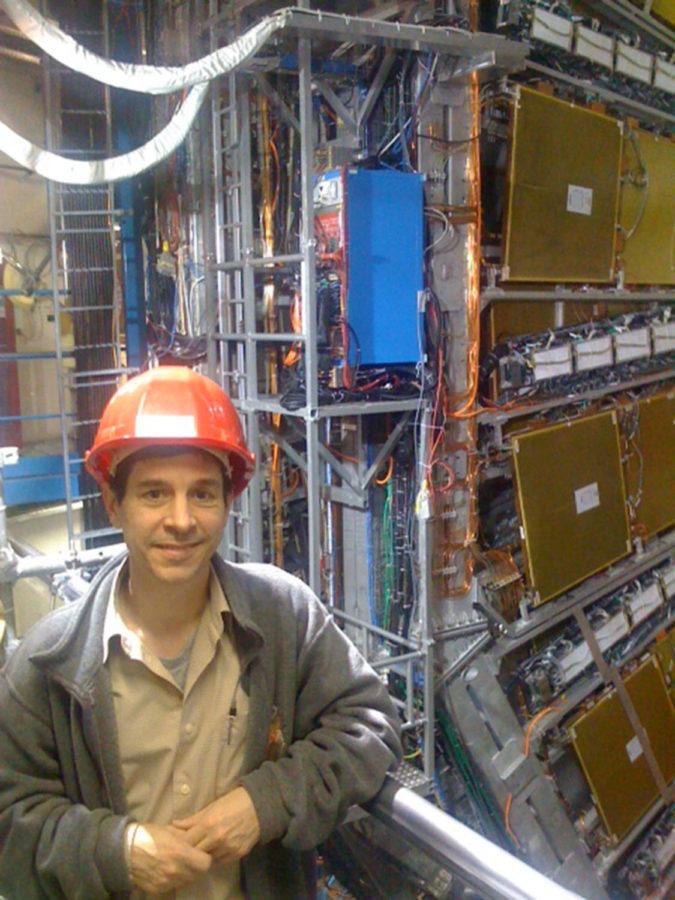ISU physicists contribute to Nobel Prize-winning work on Higgs boson particle
Jim Cochran, professor of physics and astronomy, stands in front of the ATLAS detector. Cochran was the principal investigator for the ATLAS experiment at Iowa State.
October 28, 2013
A group of ISU faculty members and graduate students has contributed to experiments that have led to the confirmation of the existence of the Higgs boson particle and the 2013 Nobel Prize in Physics.
The faculty and students were a part of the ATLAS experiments conducted at the Large Hadron Collider in Switzerland.
These experiments confirmed the existence of the Higgs boson particle, which is a fundamental component the Standard Model, a current understanding of particle physics.
Six physicists in 1964 initially theorized the existence of the Higgs boson particle.
Two of those physicists, Peter Higgs and Francois Englert, were awarded the 2013 Nobel Prize in Physics for their prediction.
The experiments through ATLAS, which stands for A Toroidal LHC Apparatus, involved 3,700 scientists from 36 countries. Construction on the detector began in 2003 and was completed in 2008.
Chunhui Chen, assistant professor of physics and astronomy, said Iowa State had been involved from the very beginning.
“The group contributed to the detector design and construction,” Chen said. “Then when we started taking data in 2008, obviously somebody has to operate a machine and do the calibration and quality checks to run the experiment right.”
The project confirmed the existence of the particle by slowly narrowing down the range of particles that could possibly be the Higgs boson.
“The theory predicts everything about the Higgs boson and how it interacts with other particles. The only thing the theory doesn’t predict is how heavy it is,” said Soeren Prell, professor in physics and astronomy.
But This theory couldn’t stand on its own, as it needed experimental data to back it up.
Jim Cochran, professor of physics and astronomy and the principle investigator for the ATLAS experiment at Iowa State, explained the importance of testing the theory.
“The main thing that we’re always doing is trying to see where the Standard Model is wrong,” Cochran said. “If we can find any clue or break in it, then that’s a big deal. That will point us where to go next. The Standard Model is amazing, but there are many things wrong with it. It doesn’t have gravity; we don’t know where all these masses come from; and I think we know that at higher energy it will fail.”
Although thousands of people worked on the confirmation of the Higgs boson particle, a Nobel Prize can only be awarded to three people at most. The prize went to Higgs and Englert, but ATLAS and other experiments that confirmed the Higgs’ existence were given credit during the Nobel announcement.
“From a physics point of view, this discovery is one of the most important discoveries in the last one or two decades,” Chen said. “However, the confirmation of the Higgs boson is far from the end of the ATLAS experiments.”
Prell agreed: “There are really big unanswered questions in particle physics that we are trying to address. One of them is that the known matter in the universe is five percent. Ninety-five percent consists of dark matter and dark energy. We may have a good shot at the LHC with the ATLAS experiment to produce dark matter and measure it.
“There is the question of why there is matter in the universe. … Those are the things we are looking for with the Large Hadron Collider.”







